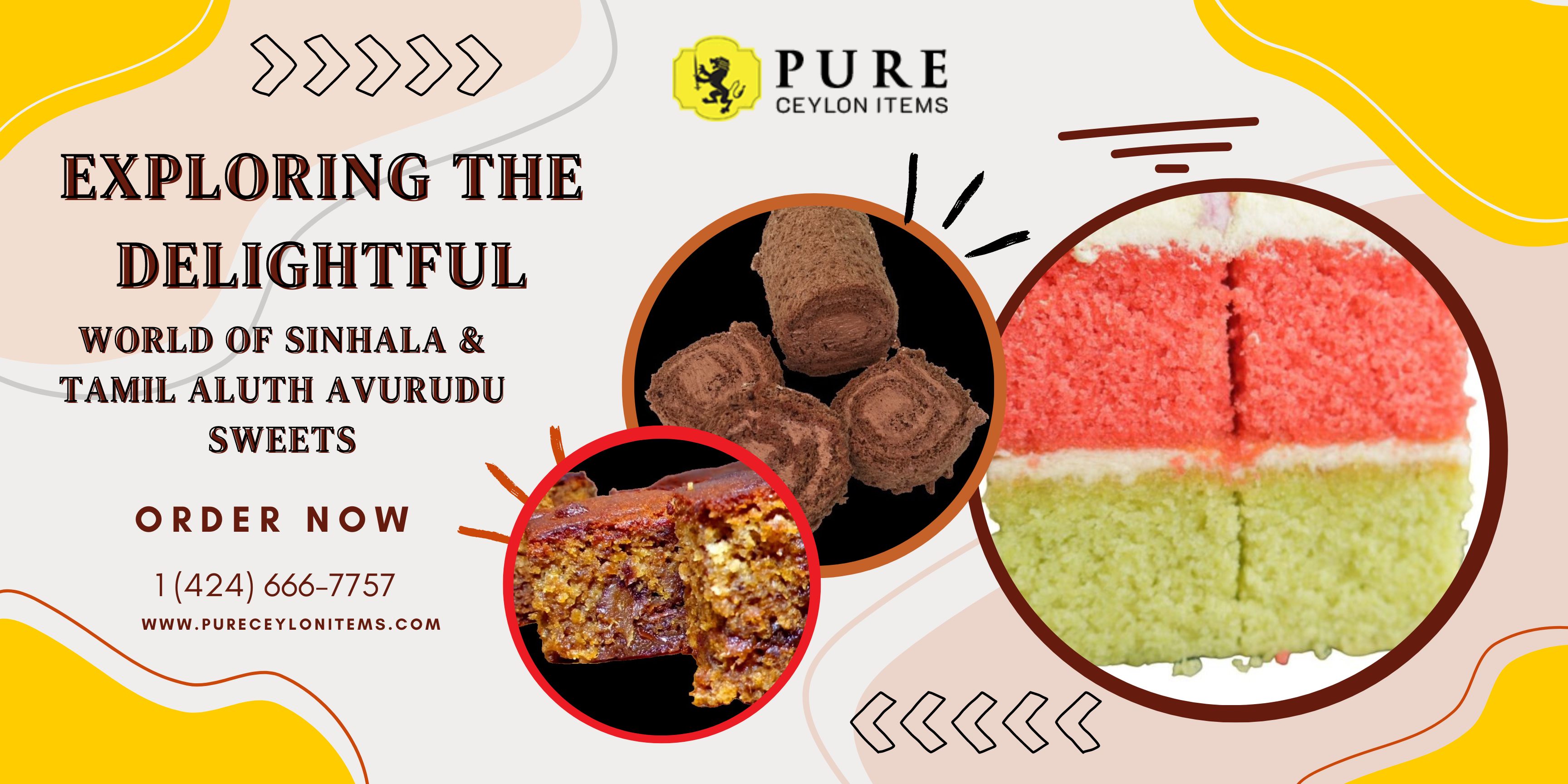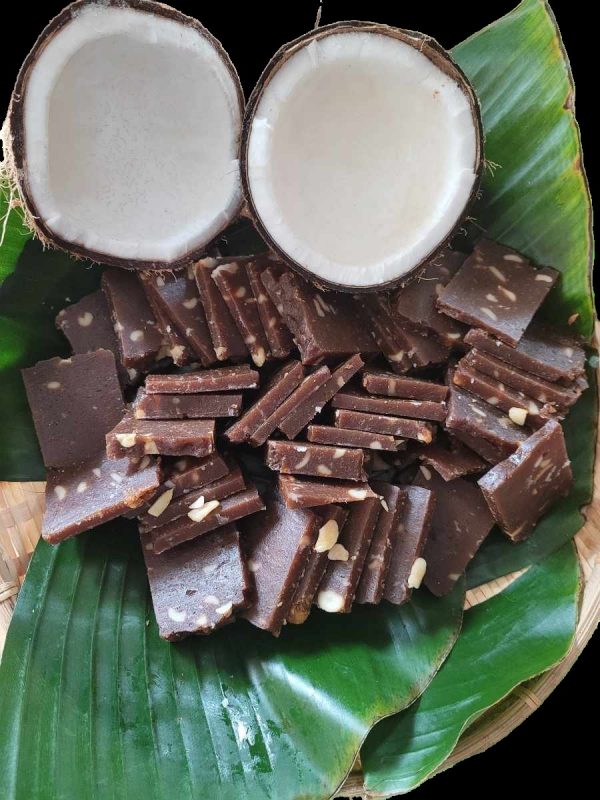Exploring the Delightful World of Sinhala & Tamil Aluth Avurudu Sweets
 I. Unveiling the Sweet Traditions
I. Unveiling the Sweet Traditions
In the heart of Sri Lanka, amidst the vibrant festivities of Aluth Avurudu, lies a treasure trove of culinary delights that symbolize tradition, heritage, and the joy of communal celebration. Aluth Avurudu, or the Sinhala and Tamil New Year Sweet, is a time-honored festival that transcends ethnic boundaries, bringing together communities to usher in the dawn of a new year with fervor and jubilation. Central to this celebration is the delectable array of sweets that adorn every household, serving not only as culinary delights but also as embodiments of cultural heritage and familial traditions.
I. Significance of Aluth Avurudu
Aluth Avurudu holds immense significance in the cultural tapestry of Sri Lanka, marking the transition of the sun from the Meena Rashiya (House of Pisces) to the Mesha Rashiya (House of Aries), symbolizing the dawn of a new astrological year. This auspicious occasion is steeped in age-old customs and rituals that reflect the island’s rich cultural heritage and the deep-rooted beliefs of its people.
II. Traditional Sweets in Sinhala Culture
A. Kokis: Crispy Rice Flour Snack
Kokis, with its intricate patterns and crispy texture, stands as a testament to the culinary craftsmanship of Sinhala culture. Made from a batter of rice flour, coconut milk, and spices, Kokis is intricately molded into unique shapes using special molds before being deep-fried to golden perfection.
B. Kavum: Sweet, Deep-fried Delicacy
Kavum, with its irresistible sweetness and aromatic flavors, holds a special place in the hearts of Sri Lankans during Aluth Avurudu. This deep-fried delicacy, crafted from a mixture of rice flour, treacle, and coconut, is shaped into small orbs or elongated diamonds before being fried to a crisp, golden brown.
C. Athiraha: Sticky, Chewy Treat
Athiraha, with its sticky texture and indulgent sweetness, offers a delightful contrast to the crispness of Kokis and Kavum. This chewy treat, made from rice flour, jaggery, and coconut milk, is cooked to perfection before being cut into bite-sized pieces, making it a favorite among both young and old alike.

PACKAGE S2 – Free Shipping ( Pre-Order Now)
Ribbon Cake 1000g
Date Cake 1000g
Chocolate Roll 600g
Kaludodol 500g
Delivery Starts on March 25th, 2024 ( order cut-off date March 20th, 2024)
III. Traditional Sweets in Tamil Culture
A. Mung Kavum: Green Gram-based Sweet
Mung Kavum, a specialty of Tamil cuisine, showcases the unique flavors and textures of Tamil Aluth Avurudu sweets. Crafted from a mixture of green gram flour, jaggery, and coconut milk, this sweet delicacy is deep-fried to a crispy golden brown, offering a delightful crunch with every bite.
B. Thaen Kavum: Honey-Infused Dessert
Thaen Kavum, meaning “honey kavum,” is a tantalizing sweet treat that epitomizes the essence of Tamil culinary artistry. Made from a blend of rice flour, honey, and coconut milk, this dessert is fried until golden and then soaked in a fragrant honey syrup, imparting a luscious sweetness that lingers on the palate.
C. Achchu Murukku: Intricately Designed Sweet
Achchu Murukku, with its intricate patterns and delicate crunch, exemplifies the craftsmanship and creativity of Tamil sweet makers. This intricately designed snack, made from a batter of rice flour, coconut milk, and spices, is pressed through a special mold to create beautiful patterns before being deep-fried to crispy perfection.
Stay tuned for the next part of our journey as we delve deeper into the fusion sweets, ingredients, symbolism, and regional variations of Sinhala and Tamil Aluth Avurudu sweets, unraveling the richness of this cultural extravaganza.
IV. Unique Fusion Sweets
In the colorful tapestry of Aluth Avurudu festivities, the fusion of Sinhala and Tamil culinary traditions births a captivating array of unique sweets that bridge cultural divides and celebrate culinary ingenuity. These fusion delicacies not only blend flavors and techniques but also symbolize the harmonious coexistence of diverse cultural influences within Sri Lanka.
Unique Fusion Sweets: Harmonizing Culinary Traditions
In the colorful tapestry of Aluth Avurudu festivities, the fusion of Sinhala and Tamil culinary traditions births a captivating array of unique sweets that bridge cultural divides and celebrate culinary ingenuity. These fusion delicacies not only blend flavors and techniques but also symbolize the harmonious coexistence of diverse cultural influences within Sri Lanka.
1. Sinhala-Tamil Fusion: A Symphony of Flavors The marriage of Sinhala and Tamil culinary traditions gives rise to innovative sweets that tantalize the palate with their harmonious blend of ingredients and techniques. From the marriage of jaggery-infused kavum with fragrant cardamom to the fusion of crispy kokis with creamy coconut, these sweets embody the spirit of cultural unity and culinary creativity, offering a delicious reflection of Sri Lanka’s multicultural heritage.
2. Modern Interpretations and Creative Experimentation In recent years, chefs and home cooks have embraced the opportunity to experiment with traditional recipes, infusing them with modern twists and global influences. From the incorporation of exotic fruits like mango and pineapple into traditional sweets to the introduction of trendy ingredients like matcha and rosewater, these innovative creations push the boundaries of tradition while honoring the essence of Aluth Avurudu celebrations.
3. Cultural Exchange and Culinary Innovation The evolution of fusion sweets not only reflects the changing tastes and preferences of contemporary society but also highlights the power of cultural exchange and culinary innovation. Through the exploration of new ingredients, techniques, and flavor combinations, these sweets serve as a delicious reminder of the dynamic nature of Sri Lanka’s culinary landscape and the endless possibilities that arise when diverse cultures come together in celebration.
V. Ingredients and Preparation Techniques
The art of creating Aluth Avurudu sweets is a cherished tradition passed down through generations, steeped in time-honored techniques and using locally sourced ingredients. Understanding the ingredients and preparation methods is key to mastering these delectable treats that grace the tables during the festive season.
1. Common Ingredients in Aluth Avurudu Sweets
- Rice Flour: A staple ingredient used in many Aluth Avurudu sweets, rice flour provides the base for crispy snacks like kokis and the dough for delicacies like kavum.
- Coconut: From freshly grated coconut to creamy coconut milk, coconut is a quintessential ingredient that adds richness and flavor to sweets like kavum and athiraha.
- Jaggery: Also known as “hakuru,” jaggery is used as a natural sweetener in Aluth Avurudu sweets, imparting a rich caramel flavor to dishes like kavum and mung kavum.
- Spices: Aromatic spices such as cardamom, cinnamon, and cloves are often used to add depth of flavor to Aluth Avurudu sweets, enhancing their taste and aroma.
2. Traditional Cooking Methods
- Deep Frying: Many Aluth Avurudu sweets are deep-fried to achieve the perfect texture and flavor. This method results in crispy treats like kokis and crunchy mung kavum.
- Steaming: Steaming is another common cooking technique used in Aluth Avurudu sweets, particularly for softer treats like athiraha and pani walalu.
- Molding: Intricate molds are often used to shape sweets like achchu murukku and kavum, adding decorative flair to these traditional delicacies.
- Syrup Making: The preparation of jaggery syrup plays a crucial role in many Aluth Avurudu sweets, such as kavum and mung kavum, providing sweetness and moisture to the final product.
By understanding the role of each ingredient and mastering traditional preparation techniques, one can truly capture the essence of Aluth Avurudu sweets, preserving the cultural heritage and culinary traditions that make these treats so special.

PACKAGE S2 – Free Shipping ( Pre-Order Now)
Ribbon Cake 1000g
Date Cake 1000g
Chocolate Roll 600g
Kaludodol 500g
Delivery Starts on March 25th, 2024 ( order cut-off date March 20th, 2024)
VI. Health and Nutrition Perspective
Frequently Asked Questions
Q1. What are some must-try Aluth Avurudu sweets?
Ans: Some must-try Aluth Avurudu sweets include kokis, kavum, athiraha, mung kavum, thaen kavum, and achchu murukku. These traditional treats showcase the rich culinary heritage of both Sinhala and Tamil cultures.
Q2. How can one learn to make traditional Aluth Avurudu sweets?
Ans: Learning to make traditional Aluth Avurudu sweets often involves a combination of hands-on practice, following authentic recipes passed down through generations and seeking guidance from experienced cooks or family members. There are also numerous online resources, cooking classes, and workshops available for those interested in mastering the art of sweet-making for Aluth Avurudu celebrations.
Q3. How do Aluth Avurudu sweets vary by region?
Ans: Aluth Avurudu sweets can vary significantly by region, with each area putting its unique spin on traditional recipes based on local ingredients, cultural influences, and culinary traditions. For example, coastal regions might incorporate more coconut-based sweets, while inland areas might favor jaggery-infused delicacies.





